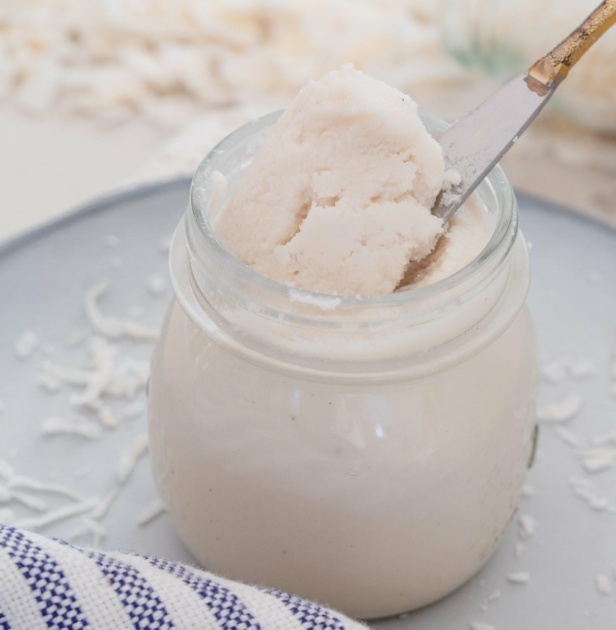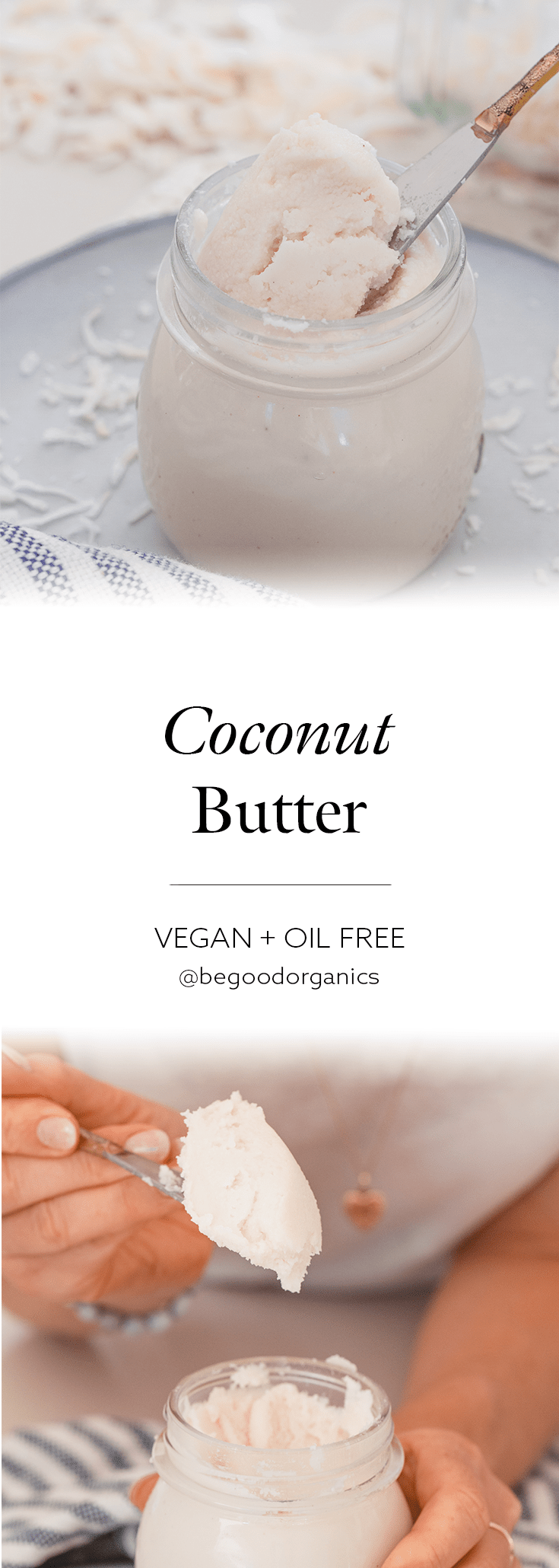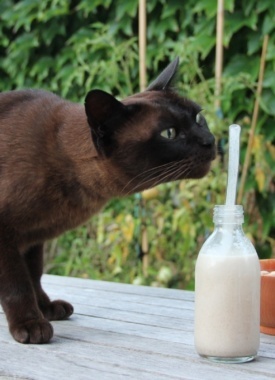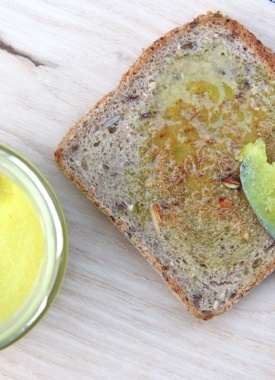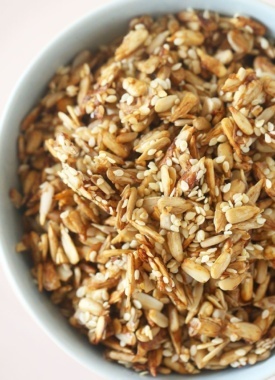Nine out of ten people don’t know how to make their own coconut butter. I want to make sure you’re one of the 1’s! All you need is 1 ingredient, 10 mins, and a food processor. Creamy, shortbready goodness, for a fraction of the cost of store bought.
If you haven’t tried coconut butter before, here’s what you’re about to experience…
- A smooth melt-in-your-mouth texture, kind of like fudge
- Naturally sweet, with no added sweeteners or flavourings
- The perfect healthy icing to spread on top of your cakes, muffins, and slices
Watch my video below to see how the coconut magically turns from dried shreds into a creamy butter. Then give it a try yourself – I promise you’ll never look back.
Watch how to make Coconut Butter
What is coconut butter good for?
Coconut butter is similar to nut butter in concept – it’s dried desiccated coconut ground down, until it releases its oils and becomes a buttery paste. It tastes quite naturally sweet, and almost has a fudge or shortbread type texture to it. It’s a great pantry staple to have on hand as you can use it in loads of applications – sweet and savoury. Here are a few of my favourite ideas:
- As a healthy icing for cakes, muffins, and slices
- As a spread for banana bread, pancakes, bread rolls, or toast
- Add a spoonful to homemade banana ice cream
- Add a spoonful to your morning porridge, it melts right in
- Add a tablespoon to your smoothies with water, instead of milk
- Make coconut milk (blend 1 cup coconut butter with 4 cups water).
- Freeze in ice cube trays to make coconut fudge
- Add to curries when you’re out of coconut cream
- Drizzle over ice cream for an instant hard coconut shell
- Make a healthy coconut ice
- Use it to firm up raw treats, similar to coconut oil, as it goes hard at room temperature (and super hard in the fridge/freezer)
- Sweeten with a little sweetener, and add some vanilla extract, freeze dried berries, or cacao powder to make vanilla, berry, or chocolate coconut butter
- Or, just eat it from the jar with a spoon (I probably shouldn’t recommend this as such, but hey – I know we both do it)
You can buy coconut butter ready-made in jars, but it’s quite expensive. A 500g jar here in NZ will set you back $16, vs a bag of the main ingredient – desiccated coconut, going for just $3.80.
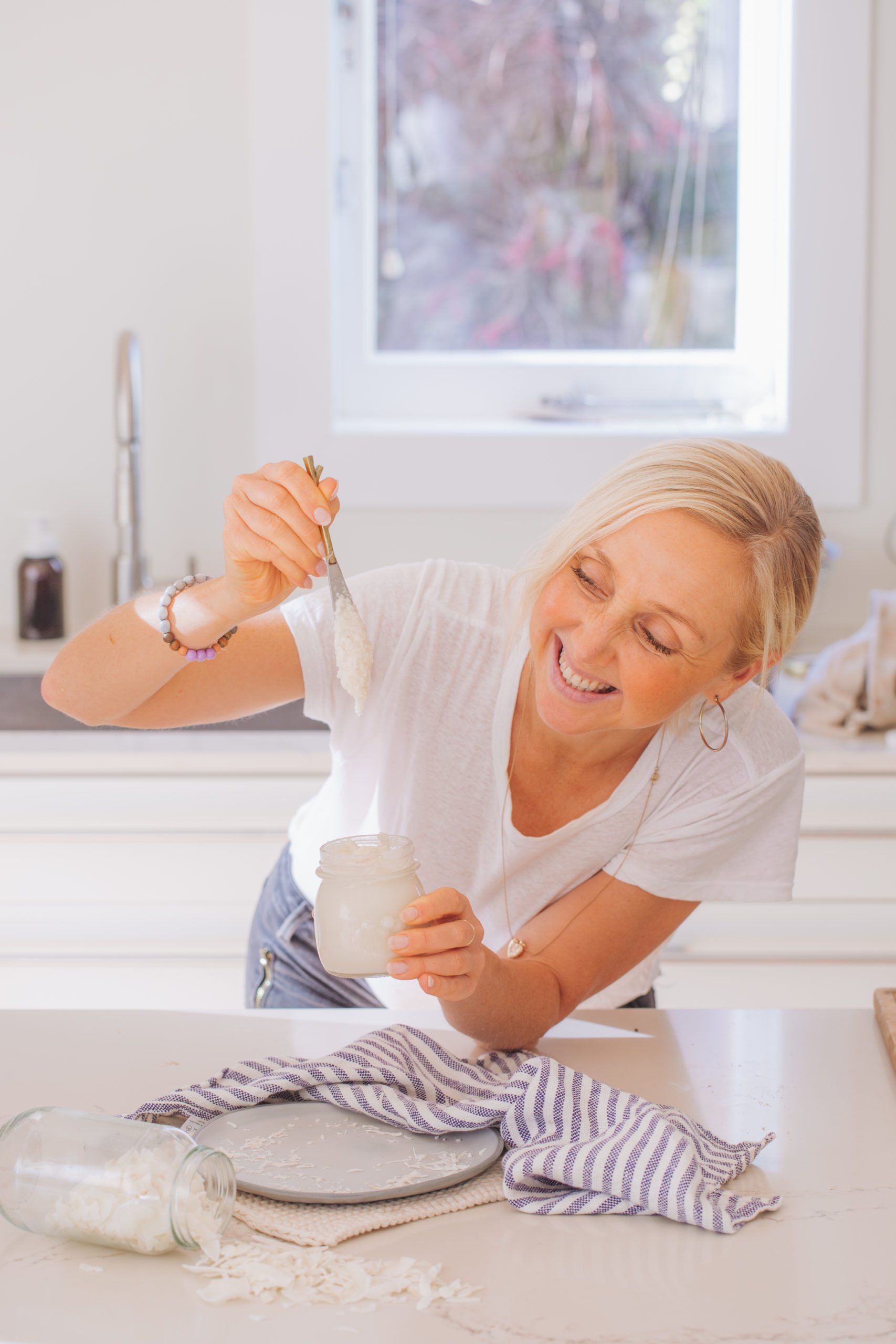
What is the difference between coconut oil and coconut butter
Coconut butter is entirely different to coconut oil. The butter is literally the whole coconut flesh dried and ground down into a paste. It therefore contains all the fibre, and is more similar to nut butter in texture, rather than dairy butter. In that sense, it’s a complete whole food, as opposed to an extracted oil. Coconut oil meanwhile is just the oil component of the dried coconut, that has been pressed out. It’s therefore appropriate for cooking with, and is clear and completely liquid when heated.
Is coconut butter healthier than butter?
Arguably yes. Coconut still contains saturated fat, so if you have issues with high LDL cholesterol, it may be best to keep your coconut consumption to a minimum (it has been shown in the scientific literature to raise LDL levels). However, if you don’t have cholesterol issues, then coconut butter can be a good alternative to dairy butter. It’s higher in fibre, lower in fat and calories, and doesn’t contain animal-based saturated fats which have been linked with heart disease and inflammation.
Due to coconut’s saturated fat content, it is one of the only plant oils that can withstand high temperatures without changing molecular structure, oxidising, and going rancid. For this reason, coconut butter is a good option for adding to your baked goods for moisture, sweetness, and richness. Its saturated fat content also means that it sets hard at room temp, and even harder in the fridge and freezer. This makes it a great ingredient to add to raw slices or desserts to help them set, especially if you’re wanting them to stay firm out of the fridge e.g. in lunch boxes.
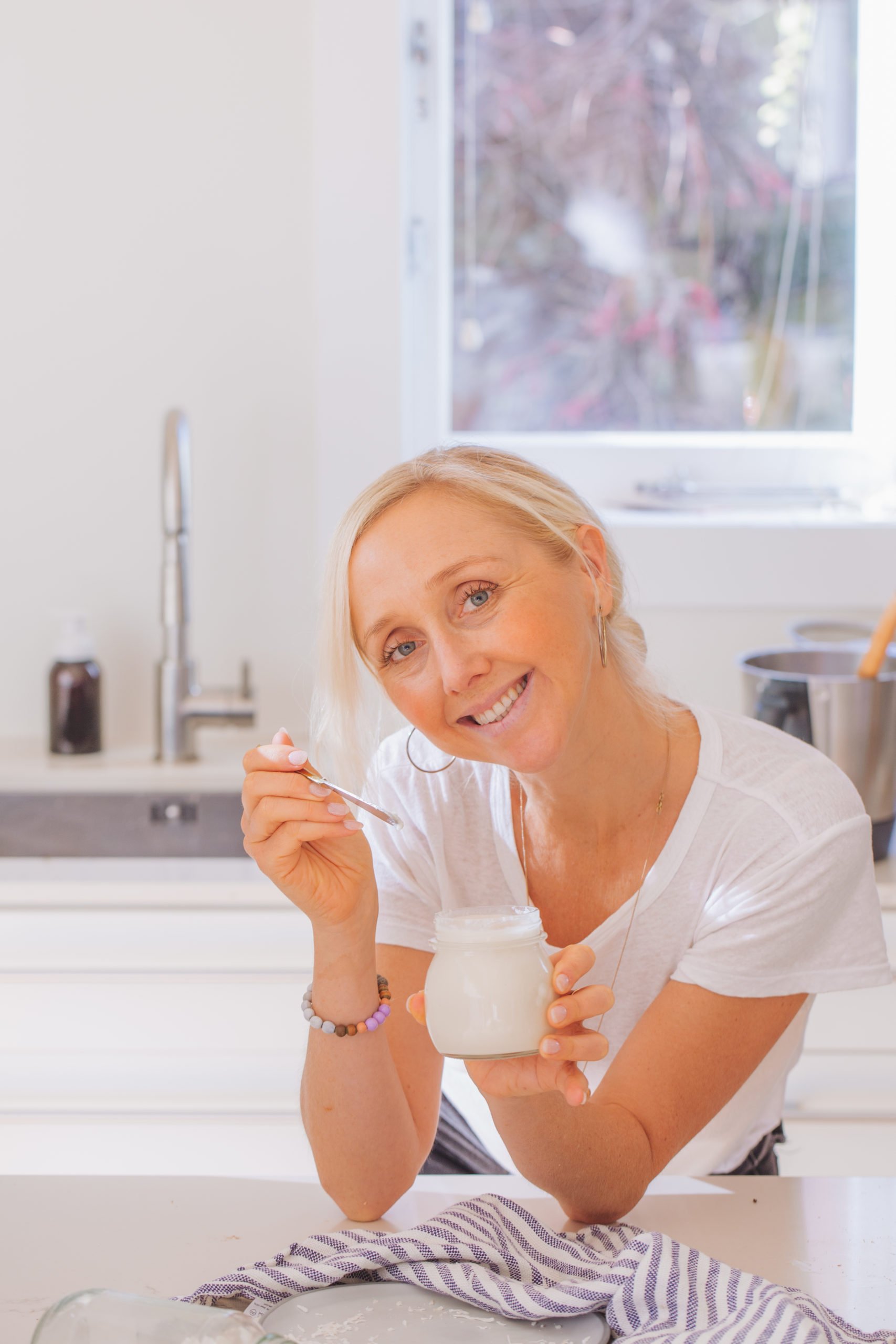
Tips for making the best coconut butter
- Use at least 5 cups of coconut – in my recipe, I use 8. The more you use, the more weight it has, and thus the easier it blends into a butter. It will look like a lot of coconut in your processor when you start out, but don’t worry it soon whittles down to just a couple of cups worth.
- Use a food processor – not a blender. The blades of a blender will flick the bits of coconut up rather than pulling them down and letting them become a butter. If you only have a blender, you can still do it, you’ll just need to stop and scrape the sides down a few times in between blends
- Stop and scrape – a few times. Every minute or so, stop, scrape the sides down so everything gets back together, then blend again.
- Be persistent – depending on the strength of your processor, it can take anywhere between two and ten minutes to get to the butter stage. Don’t stop early, keep going until it really becomes a warm spreadable butter like mine in the vid.
- Add coco oil if you need – if it’s really not blending, you can add 1-2 tablespoons of coconut oil to get it moving.
- Add flavours at the end – adding sweetener, vanilla powder/extract, freeze-dried berries, or cacao powder, will make the mix seize up, so only do this at the very end after you’ve hit the creamy butter stage. I recommend using coco sugar and vanilla powder if you can (e.g. dry additions), to avoid it seizing up from adding liquids.
How to store your coconut butter
In the pantry. If you pop it in the fridge it’ll go rock hard. If you want to bring it back to the liquid stage, heat it gently in the jar with the lid off in the oven at 50C for a few minutes. It will keep in your pantry for a good 3 months in a sealed glass jar.
Want something to spread your coconut butter on / add it into? Try these:
- Banana Walnut Bread
- Best Banana Ice Cream
- Fruity Coconut Muffins
- Banana Ginger Cake
- Healthy Coconut Ice
- Pink Cupcakes
- Banana Blueberry Pancakes
If you try making your own Coconut Butter, let me know! Leave me a rating and comment below, or tag me @begoodorganics on Instagram. And if you have other ways you like to use it, share them below so other readers (and I!) can learn your tips.

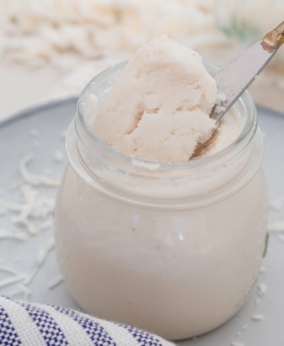
Ingredients
- 8 c desiccated coconut
Instructions
- Blend coconut in high speed food processor or blender until a silky smooth butter forms. This may take anywhere from two to ten minutes depending on the strength of the food processor. Scrape down the sides each minute to get a super creamy result. It should end up being a pourable liquid rather than a gritty paste (and warm from blending).
- Pour your finished butter in a glass jar and store in the pantry. Will keep for three months.
Equipment
- Food processor
Recipe Notes
- Add any sweetener (coconut sugar) and flavourings (vanilla powder/extract, freeze-dried strawberries, or cacao powder) at the end, after you’ve achieved the liquid butter stage, otherwise it will cause the mix to seize.

